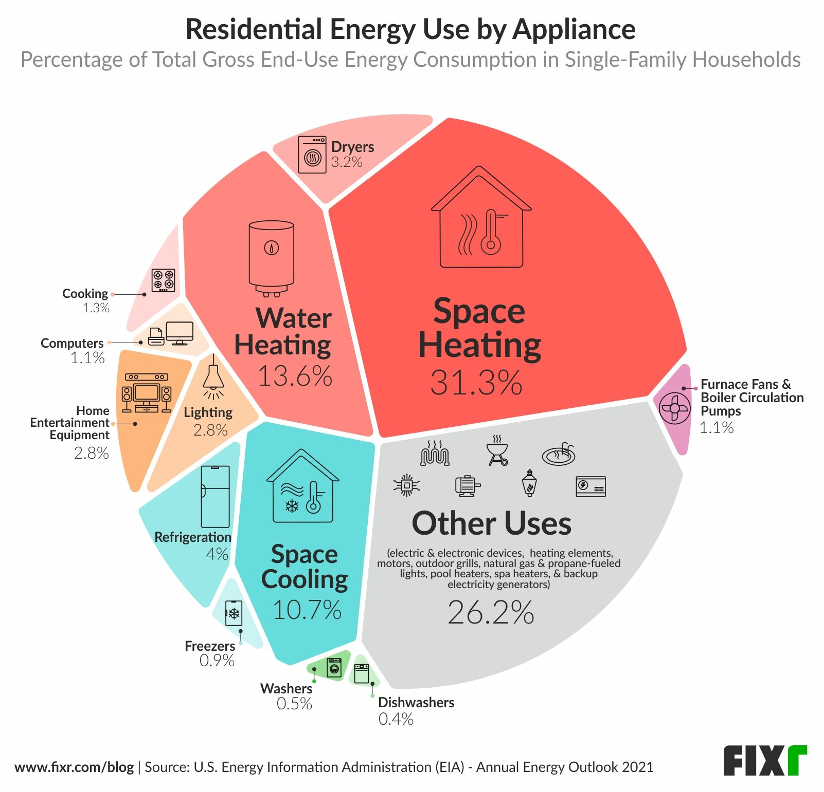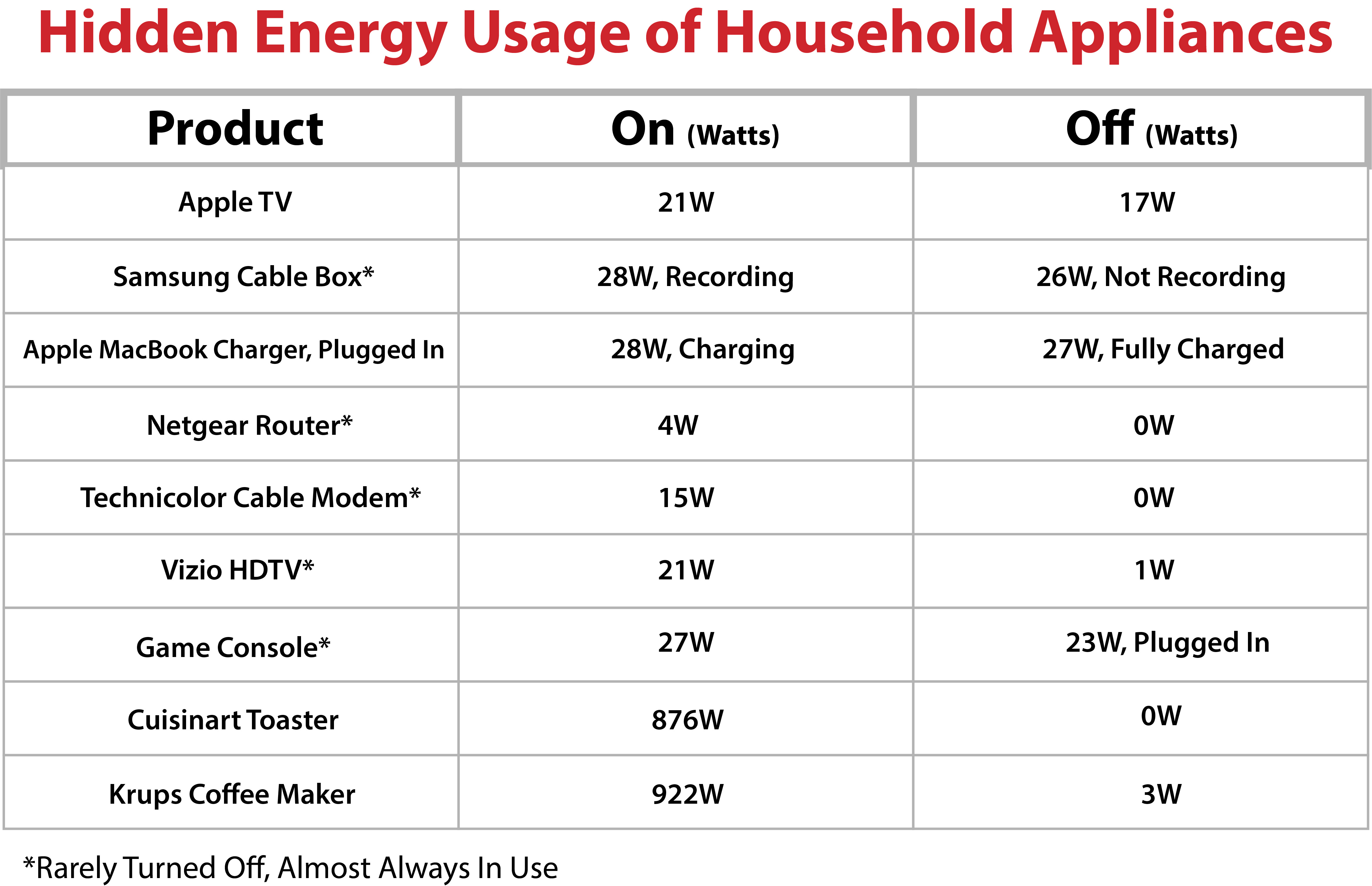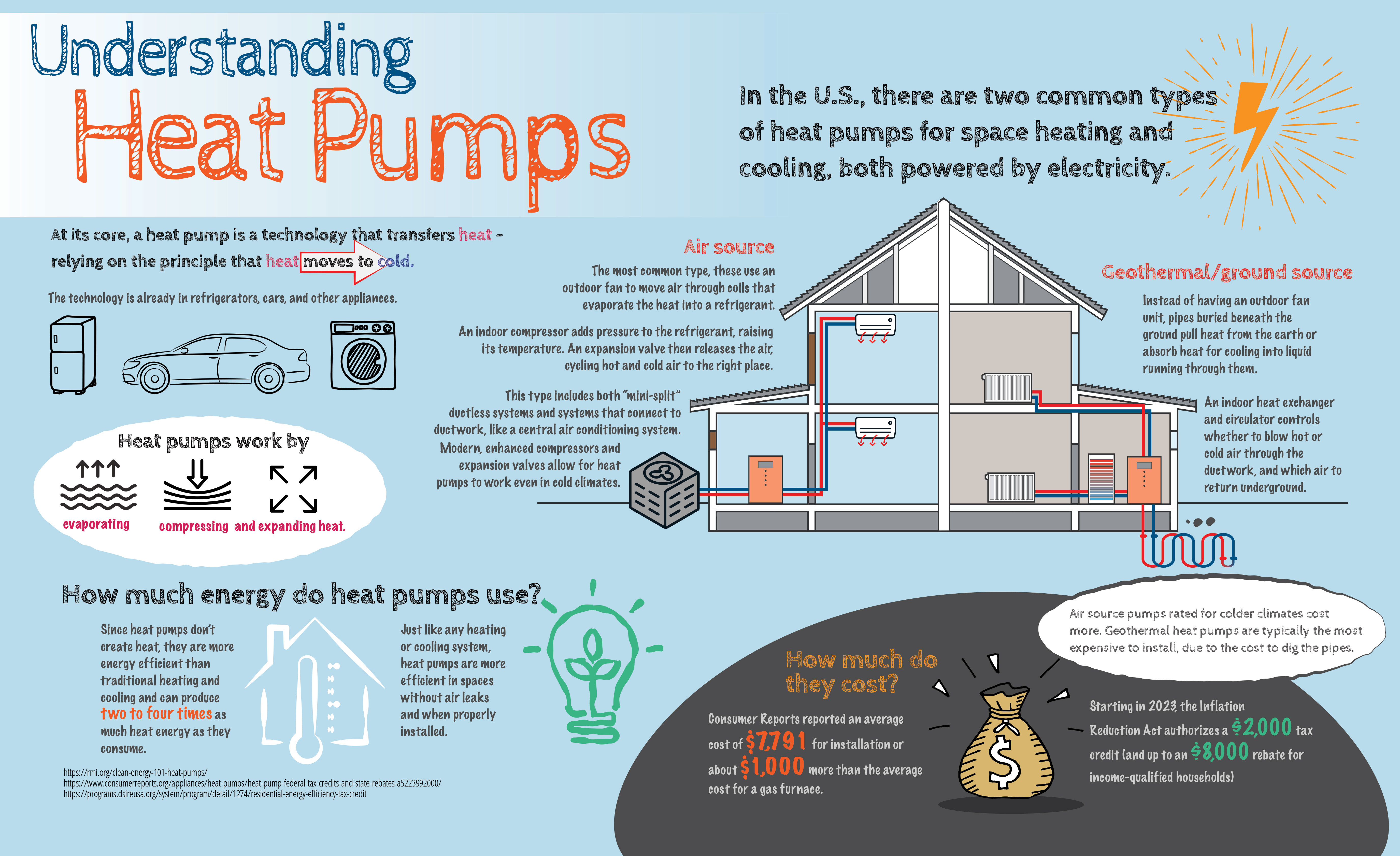As electricity prices continue to rise and the power of green energy grows, understanding how power is consumed in your home or business is more important now more than ever. Many homes and businesses in Wisconsin rely heavily on electric power to maintain their daily operations, and high energy use appliances account for a significant chunk of the energy bill.
By identifying these energy-intensive appliances and making strategic upgrades—like investing in solar power—you can take control of your energy consumption, reduce costs, and contribute to a greener planet.
In this post, we’ll look at which appliances consume the most kilowatts per hour, how to manage their impact, and how installing a solar energy system can offset the rising cost of power.
Top Energy-Consuming Appliances and How Solar Helps
Heating and Cooling Systems
Unsurprisingly, heating and cooling accounts for the majority of energy use in homes and commercial spaces. In Wisconsin, where the weather ranges from extremely hot and humid to bitterly cold, nearly every building relies on A/C units, furnaces, and heat pumps.

Furnaces and Boilers
- These appliances are common in homes and use significant amounts of energy, especially during our long and cold winters.
Air Conditioners
- Although our summers may be short, they often have days of high temperature, humidity, or both. Countering this demands a lot of energy from A/C units.
Read more about residential A/C energy usage from the EIA.
Heat Pumps
- Switching to a heat pump for home comfort can significantly reduce your homes energy consumption and dependence on gas, but the shift to electric can increase your homes demand on energy from the grid. This is where saving money with solar energy comes in, providing a renewable source of electricity to power your heating and cooling needs.
Water Heaters
Water heaters account for the second largest energy expense in most homes, accounting for about 14-18% of utility bills. Specifically, electric water heaters consume a lot of energy to keep water hot 24/7. Although tankless water heaters are more efficient, they can still be a major energy draw if used frequently.
Appliances in the Kitchen
Although kitchen appliances are generally smaller in size, they can collectively make up a significant amount of energy usage:
- These operate 24/7 and can account for 8-15% of your overall energy bill.
Ovens and Stoves:
- Electric ranges can be particularly energy intensive, especially if your home cooks frequently. Usage of about an hour straight per day accounts for an estimated 13% of your total bill.
Dishwashers:
- Although modern dishwashers are increasingly energy and water efficient, they still draw on electricity to heat water and run cycles. Assuming your dishwasher runs once a day, that’s 30 loads per month, totaling to about 6% of an estimated average energy bill.
Laundry Equipment
Washing machines and dryers are significant energy consumers, especially for families or businesses with high laundry needs, such as hotels and hospitals. Dryers in particular are among the most energy intensive appliances in a home.
Lighting
While LED technology has greatly reduced the energy needed by lighting, commercial buildings with high lighting demand still see a significant cost. Motion sensors and timers can help reduce waste, but lighting remains a top energy consumer overall.
Electronics and Other Appliances
Devices like TV’s, computers, gaming systems, and phone chargers may not seem like large energy consumers. The individual impact of these appliances ins minimal, but together contribute to what’s known as ‘phantom loads’ – energy being used from appliances in standby modes. These costs can contribute significantly to businesses with hundreds of computers, servers, electronic equipment, or electronic kitchen appliances.

Image courtesy of New York Times
Read more about the difference between a kilowatt and a kilowatt-hour from Arch.
How Solar Electricity Offsets Energy Usage
For both residential and commercial buildings, installing solar panels is a great investment to combat rising electricity rates. Here’s how a solar panel system can offset the amount of electricity used from these appliances:
Reducing Your Heating and Cooling Costs
If you’ve upgraded to a heat pump or rely on other electric heating or A/C systems, solar can directly offset the increased demand. During sunny days, the energy generated by your system can power your HVAC system, reducing or eliminating the need to pull power from the grid. Even during Wisconsin’s colder months, modern solar panels can produce energy efficiently (sometimes up to 110%+ efficiently) when snow reflects sunlight and temperatures are cold.
Lowering Water Heating Expenses
Pairing your electric water heater with solar is an excellent way to cut costs. Solar power supplies the electricity to maintain hot water, and using a timer to heat water during peak sunlight hours maximizes efficiency.
Offsetting Kitchen Appliance Energy Use
Solar systems also offset kitchen appliances such as refrigerators, electric ranges, microwaves, and more. If you’re a business such as a restaurant or cafe, the savings from offsetting these high-demand appliances with solar can be substantial
Supporting Laundry Energy Needs
For homes with high laundry needs or businesses such as laundromats or hotels, solar can help to reduce (or reduce entirely) the electricity needed to run washers or dryers. Scheduling laundry during peak solar hours also helps to optimize savings.
Powering Electronics and Lighting
Installing solar can also reduce the passive cost of powering electronics and lighting, especially for commercial buildings. Additionally, using energy storage systems like batteries can help you expand your clean energy use into the evening hours when lighting demands are higher.
Heat Pumps and Solar: A Perfect Pairing
Switching from a traditional furnace to a heat pump is a great way to lower your carbon footprint, but it does come with a tradeoff: increased electricity usage. Unlike traditional heating systems that rely on fossil fuels, heat pumps run entirely on electricity. While this may increase the electric portion of your energy bill, solar power can offset the added cost.
By installing a solar energy system, you can generate the electricity needed to power your heat pump, effectively canceling out the added cost. In most cases, when a solar system is sized for your home, the goal is to offset as close to 100% of your long-term energy needs as possible. This involves designing a system that accounts for your heat pump and other electrical needs.

Image courtesy of American Public Power Association
This HVAC example also applies to businesses. Commercial buildings often have large HVAC systems that operate continuously. Installing a commercial solar array can reduce passive operating costs while enhancing sustainability efforts, which in turn may attract eco-friendly customers.
Final Thoughts
Understanding which electrical appliances use the most energy is the first step into reducing your energy costs. By transitioning to solar, Wisconsin residents can offset the increased electrical demand from heating & cooling, heating water, lighting, and other energy intensive appliances. Not only does this save money, but it also supports a more sustainable and resilient energy future.
Ready to take control of your energy usage? Contact Arch today and speak with a home or commercial energy consultant to draft a custom plan that can power your home or business while offsetting the cost of your most energy-hungry appliances.